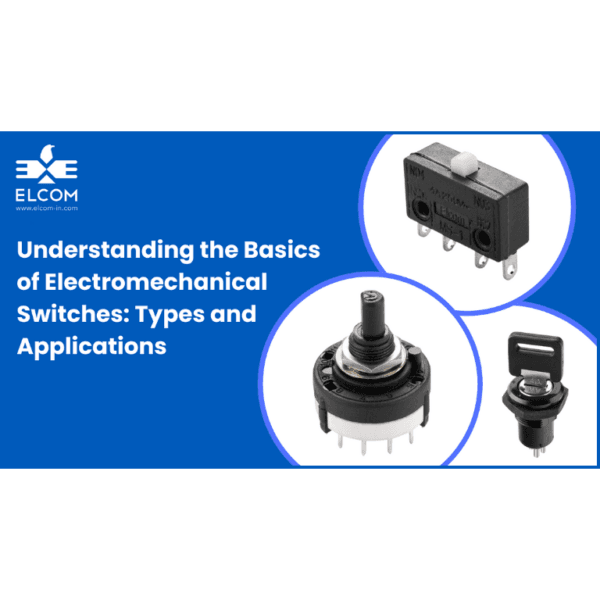Electromechanical & Electronic Components, Uncategorized
Understanding the Basics of Electromechanical Switches: Types and Applications
8th January 2025
By Team ElcomUsing a high-quality electrical switch in your machinery is for the best as it ensures the safety and efficiency of the equipment concerned. These switches control the flow of electricity by completing or breaking an electric circuit. However, when the same switch that is so crucial goes out of commission, the problem can be more […]

Types of Electromechanical Switches
Rotary Switches
Rocker Switches
Keylock Switches
Push Button Switches
Micro Switches
Thumbwheel Switches
Applications of Electromechanical Switches
Railway
Telecom
Consumer Electronics
Medical Electronics
Industrial Electronics
Match Your Application with the Right Industrial Switch
Number of poles
Current rating
Voltage rating
Actuator type
Mounting style
Environmental conditions
The Reliability Factor in Elcom’s Electromechanical Switches
Elcom manufactures a diverse collection of electromechanical switches that meet varied application requirements. Our products feature solid colours, translucent options, and two-colour combinations. With operating parameters ranging from 1 to 2 poles and 3 to 16 amperes, our switches can handle various electrical loads. Designed to withstand harsh conditions, they operate reliably up to 85°C.
Conclusion
Electromechanical switches are essential machinery components that execute the functionality of countless devices. Understanding their types, characteristics, and applications is crucial for engineers, designers, and technicians involved in product development and maintenance.
This guide is aimed at helping you consider the specific requirements while selecting an appropriate electromechanical for your concerned application and achieving optimal performance and reliability.
With Elcom, you can have confidence that your industrial equipment is not only safe for use but power efficient. Our commitment to quality and customer satisfaction ensures that your investment in our switches will provide long-term benefits. Achieve exceptional industrial efficiency through strategic deployment of our top-tier switches. Contact us today.
Looking for help?
Our team is ready to assist you and provide the support you need